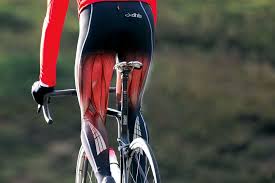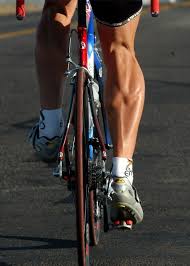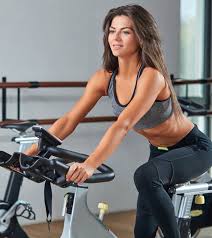
Many cyclists want to quickly pump up major muscle groups thanks to cycling. But how do you do it right? For many, this is an unexplored topic and because of this, novice cyclists make mistakes.
Do not panic, but you need to get familiar with the features of the body toning process. This text will cover the basic concepts of the process of pumping up muscle groups. You will also learn about which exercises will be effective and will definitely give results for the body shape.
What does muscle toning mean?
Before you begin to study specific exercises for building muscle, it is worth understanding the basic concepts of this process. In general, it is worth knowing what such a thing as muscle toning means.

If explained in a simple way, then this means an improvement in the muscle definition of a person.
In order to achieve significant results, you need to do not only cycling, but also combine different types of training, such as cardio or resistance training. Thanks to such training, the body shape will improve, and you will get weight loss.
Some may confuse muscle toning with muscle mass, but these are different terms. In order to have muscle mass, you need to perform certain exercises that will lead to muscle hypertrophy. These exercises include repetitive training, with repetition of exercises 10-12 times.
Thanks to cycling, the body will become toned and embossed, and thanks to additional training, the result will be visible in a short time.
But if you want to achieve exactly hypertrophy of muscles, then you should do special exercises on a par with cycling.
What muscles does cycling tone by muscle groups?
To understand this issue, it is worth considering the main muscle groups that can change their relief during cycling.
Lower body muscles
Effect on thigh muscles

For the lower body, cycling is a great muscles toning option, especially for the leg muscles. If you are cycling regularly, then the result of training will first appear on your feet. The tendons under the knee, shin muscles and quadriceps are most actively involved in the process of cycling. It is these parts of the legs that are most actively involved in the pedal stroke.
If we talk about the localization of the hamstrings, then they are located on the back of the thigh. The main role of these tendons is manifested in the movement of the leg up.
The quadriceps is on the other side of the thigh. The main function of the quadriceps is, on the contrary, downward pull.
Based on this information, it can be understood that a full-fledged pedal stroke is impossible without these parts of the body.
A regular cycling workout can work these exercises out, but it’s best to include additional muscle exercises. For example, it can be burpees, lunges or squats. Also, many advices deadlift and swing weights.
Effect on calf muscles

Because of the great workout on the bike, calf muscles always develop quickly. The muscles of the calves will be toned regardless of the movements of the leg, that is, when moving up and down, the effect will be the same. This also means that the calf muscles affect pedaling power.
The previously mentioned quadriceps and hamstrings are directly related to the calf muscles. These muscles support the thigh muscles.
This group of muscles consists of two main ones, it is the gastrocnemius and the soleus. These muscles are located on the back of the leg. Above is the gastrocnemius, and below it is the soleus. It is the calf muscle in the legs that creates the visible relief of the lower leg.
If you add additional resistance training, then you can achieve a better result, so such loads builds muscle. Also, if you add such training, then the endurance of the legs will become higher and the calves produce more endurance to be able to ride for a long time without fatigue in the lower body.
Additionally, such additional strength training have health benefits, because of them the risks of muscle damage are reduced.
You can add simple exercises, such as jumping rope or walking up the stairs.
Effect on gluteal muscles

Many, when studying the topic of the muscles of the lower body, miss the gluteal muscles. These muscles biking works in large volume in the process of cycling, and cycling tone appears accordingly.
The buttocks have three main muscles, these are gluteus maximus, mediums, minimums.
There is a popular misconception that this gluteus maximus etc. only work when you get off the bike seat and ride while standing, but this is a myth. Yes, this is an effective workout and will really help build muscles, but not only from this muscle relief can change. Even indoor cycling performance can improve muscles.
First, you need to deal with the position of the seat. The seat should be a little higher than you expect. Due to the fact that the seat is higher, the hip flexors have a larger extension radius.
A lot also depends on the quality of the saddle. The correct location of the buttocks and the effectiveness of training also depend on this. Thus, cycling tones the muscles better.
You can add additional classic exercises to improve the relief of the buttocks to achieve visible results and lose more body fat.
Upper body muscles
Many people think that you cannot be body balanced if you are engaged in cycling, since basically only the legs take part in physical activity, but this is another myth.
Of course, the legs receive the highest load, but the upper body also takes an active part in cycling. Even with indoor cycling. Such a fair development of the body even with medium intensity is the benefits of cycling.
Effect on arm muscles

The arms also play a role in supporting the body while cycling.
In the hands, triceps and biceps take an active part, which refers to the upper arms. The muscles of the forearm also take an active part. Interval training will help you get relief from these muscles.
Thanks to the upper body, the spine is in a stable position, which allows the whole body to remain in a balanced position.
To gain the relief of the hands, it is worth starting cross-training, which will allow you to change the muscular structure in the hands and improve it.
Effect on shoulders muscles

The condition of the muscles in the shoulders directly depends on what kind of terrain you drive. Therefore, if you like to ride outdoor cycling and mountain bike, then the impact on the shoulders will be significant.
The shoulders work very hard, as do the triceps and biceps.
Mountain biking expends most of the effort from the shoulder muscles, since these are not free weights, but body pressure on the handlebars through the shoulders.
So if you want to do cycling, but also want to improve your upper body muscles, then cycling targets should be in difficult terrain.
Effect on core muscles
If we are talking about a core workout, then it includes several areas of the body, these are the pelvis, abdomen, back, buttocks and spine.
When cycling, all these parts of the body are activated and are actively involved in maintaining the balance of the body while it’s leaning forward, especially on rough roads.
The abdominal muscles cannot be trained separately from the body, so full body exercises and proper nutrition must be included for such workouts. A cyclist should not consume more calories than he needs. For example, it can even be weight training.
Does cycling tone your stomach?
Cycling toning the entire body as well as the abdomen. A lot of abdomen toning in the process of riding a difficult road, especially mountain biking.
Is cycling good for muscle toning?
Muscles improve in relief during cycling, as this is a complete sport with its effects on the body and cardiovascular endurance.
What muscles get toned with cycling?
The main groups that are toned are the muscles of the thighs, arms, abs, shoulders, calves and gluteus.
What does cycling do to your body shape?
The body gradually becomes sculpted and more resilient, and the risk of heart disease also decreases.

